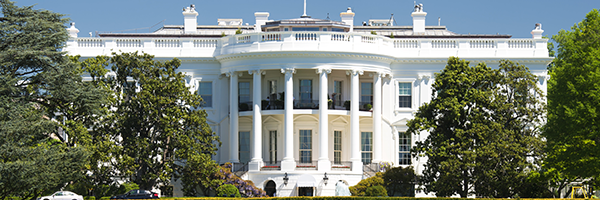
May 3, 2025 | Daily JAM |
I don’t expect the Wedneday, May 7, meeting of the Federal Reserve to produce no action on cutting interest rates, but intense scrutiny of the Fed’s words as investors search for clues on when the central bank will go into full rate-cuttinging mode.

April 30, 2025 | Daily JAM |
In the swaps market, traders increased their wagers on four quarter-point reductions by the end of the year, with the first fully priced in for July.

April 30, 2025 | Daily JAM |
Seems like we’re back again to a world where all the bad news is good news.

April 21, 2025 | Daily JAM, Morning Briefing |
The Standard & Poor’s 500 closed down 2.36% today and the Nasdaq Composite ended 2.55% lower. The consensus read–and mine too–is that the selling was driven by fears that President Donald Trump would move to oust Jerome Powell as head of the Federal Reserve before his term at the top of the Fed ends in 2026.. Today President Trump again called on the Fed to cut interest rates. On Truth Social Trump posted that he favors “preemptive cuts” to interest rates and called the Fed chairman a “loser.” An attempt to remove Powell before the end of his term would end up atbthe Supreme Court and would probably be ruled illegal. Probably. “The market doesn’t like the Fed’s independence being challenged,” Joe Saluzzi, co-manager of trading at Themis Trading told Bloomberg. “The market can at least make an attempt at predicting what an independent Fed will do. If their independence is challenged, then more erratic (unpredictable) decisions could be made. And the market does not like unpredictability.”

April 17, 2025 | Daily JAM, Morning Briefing, Short Term |
One day after Fed Chair Jerome Powell warned that the administration’s trade war was “highly likely” to spur a temporary rise in inflation with the potential for longer-lasting effects President Donald Trump blasted the Federal Reserve for not lowering interest rates and said its chair’s “termination cannot come fast enough.” “Jerome Powell of the Fed, who is always TOO LATE AND WRONG, yesterday issued a report which was another, and typical, complete ‘mess!’” Trump wrote on Truth Social. Referring to interest rates, he added: “He should certainly lower them now. Powell’s termination cannot come fast enough!”

April 13, 2025 | Daily JAM |
Maybe the tariff chaos will relent enough this week for investors and traders to pay attention to very important bank earnings reports. I’m looking for clues consumer debt, corporate loams, and stress in the financial system So far bank earnings reports are mixed.

April 11, 2025 | Daily JAM, Short Term, Videos |
Today’s Hot Money Move is Where’s the Systemic Risk This Time? I’m watching the banking sector for signs of a liquidity crunch-—specifically, the growing pile of “stranded loans” from private equity buyouts. Banks lent billions for these deals but now can’t offload the debt to investors, locking up capital that should be flowing elsewhere. If this logjam gets worse, the Fed could see it as systemic risk—-just like in 2008 or 2020-—and step in with a lifeline. The Play: Watch mid-tier banks (think PNC, not JPMorgan) when earnings drop in April. If they start warning about stuck loans, it’s a signal the Fed might move. That’s when liquidity fears could turn into a market-wide event. For now, it’s a waiting game—-but one worth tracking closely.

April 2, 2025 | Daily JAM, Videos |
Today’s video is Why the Fed is Almost Certain to be Wrong. Blame it in lags. Lags make economic forecasting really difficult at the best of times. How long does it take policies like tariffs and tax cuts to actually affect the economy and show up in the data? Right now, we’re dealing with lags from a tariffs that will eventually raise consumer prices. We don’t know when this will hit people in the wallet and really start to affect the economy as a whole. Another problem is the upcoming Trump tax cuts. This will be stimulative to the economy and the Fed may have to look at raising rates again in effort to slow more inflation. If, however, the tariffs slow the economy enough to balance out the stimulative effect of the tax cuts, the Fed would look at lowering rates. There’s really little that monetary policy can do about tariff-caused price increases. White House accounting says the tariffs and tax cuts will balance each other, but it’s tough to say if the money coming out of consumer pockets are the same pockets benefiting from the tax cuts. All this to say, the Fed remains between a rock and a hard place, and has little chance of getting this right and will almost certaInly make a mistake. The question is, How big will the mistake be?

March 28, 2025 | Daily JAM, Morning Briefing |
The Federal Reserve’s preferred inflation measure rose in February at a faster pace than in January. The rate of increase was also greater than economists had expected

March 27, 2025 | Daily JAM, Morning Briefing |
Friday’s core personal consumption expenditures (PCE) price index excluding food and energy—-the central bank’s preferred measure of underlying inflation-—is forecast to show signs of stickiness.

March 20, 2025 | Daily JAM, Morning Briefing |
That didn’t take long. Wednesday afternoon the Federal Reserve decided to keep its benchmark interest rate steady–no rate cut. Wednesday night President Donald Trump renewed his call for the Federal Reserve to lower interest rates as he criticized the central bank’s decision. “The Fed would be MUCH better off CUTTING RATES as U.S.Tariffs start to transition (ease!) their way into the economy,” Trump wrote on Truth Social. “Do the right thing.” Trump added: “April 2nd is Liberation Day in America!!!” President Trump’s criticism of the Fed’s decision certainly isn’t a surprise.

March 19, 2025 | Daily JAM, Morning Briefing |
The Federal Reserve’s Open Market Committee surprised no one with today’s vote to keep the benchmark federal funds rate in a range of 4.25%-4.5%. The mild surprise came in the revisions to the Dot Plot projections. The Fed continued to pencil in two interest rate cuts for 2025. Some investors had feared that the Fed would show it has moved to projecting just one cut in 2025.











